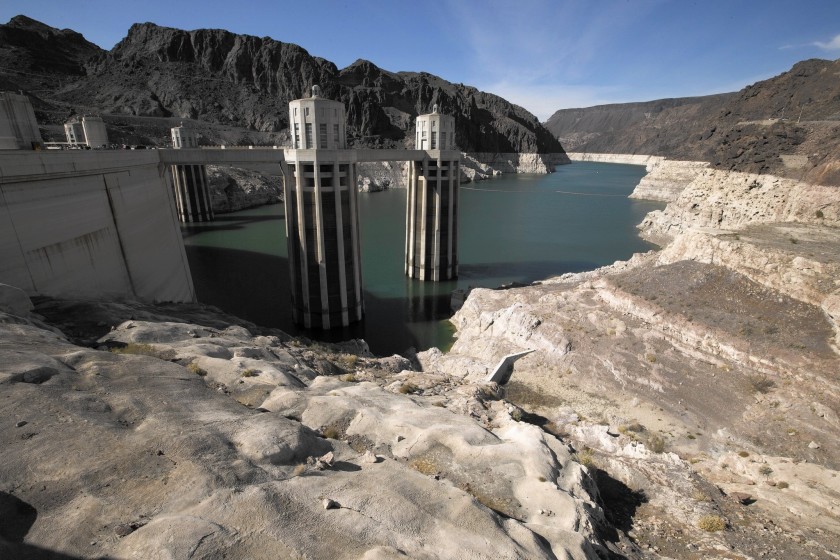Two months ago, researchers at Utah State University estimated that Arizona, California, and Nevada would collectively have to cut their intake of Colorado River water by 40 percent over the next three decades due to drought.
At a public meeting last Thursday, the Arizona Department of Water Resources confirmed the warnings: The cutbacks are coming, and soon.
Arizona will serve as a testing ground for how seriously and how quickly the states and tribal nations in the upper and lower Colorado River basins can tackle the water crisis.
This is because, as part of the deal that led to the creation of the Central Arizona Project, or CAP—the giant canal that runs from Phoenix to Tucson—Arizona agreed to be first in line when drought-induced water cuts were needed.
And given the current status of the Lake Mead reservoir, where water levels have dipped below 40 percent capacity due to reduced snowpack upstream, those cuts will need to be in place as early as next year.
Both New Mexico and Nevada are expected to implement similar measures before long, with California potentially staring down the same fate.
But Arizona will face some of the first and steepest cuts.
And while it will be absolutely necessary for the people of Phoenix and the state’s other major cities to keep their water use levels down, it will be equally important to provide those who entered the drought with unreliable access to clean water with a viable path to drinkable, running water—not just more water bottles and buckets.
To put it another way: In crafting this massive response to what is certainly an all-hands-on-deck crisis, the responsible American government agencies and corporations must be held accountable for simultaneously cleaning up the ones they’ve already caused.
According to the tentative timeline offered by Arizona’s Department of Water Resources, the first half of 2022 will consist of engagement and consultation sessions with all stakeholders in the state—a list including tribal nations, state government leaders, municipal and local representatives, and Central Arizona farming groups, among others.
Then, by the final quarter of the year, around October, the agreed-upon mitigation efforts will actually be put into practice.
Arizona Republic’s Ian James reported Friday that Arizona is anticipating a cutback of 512,000 acre-feet, or roughly 20 percent of its annual entitlement, next year.
Water officials at Thursday’s meeting said that as of now, they’re hopeful that the multistate and tribal nation Drought Contingency Plan signed in 2019 will guide them for at least the next five years.
Under that plan, the signees are currently operating at the initial Tier Zero levels; assuming the continuance of the drought and shrinking Lake Mead supplies, the region is expected to reach Tier One levels next year, triggering the heightened round of mitigation efforts, including the 20 percent cut for Arizona.
And that might well be true: If the state and other stakeholders can convince high-usage areas like Phoenix and the aforementioned agricultural operations to limit their usage even marginally, then those folks might just enter 2023 with a more hopeful vision of what future usage can look like, at least in the short-term future.
This article by Nick Martin appears in The New Republic.
